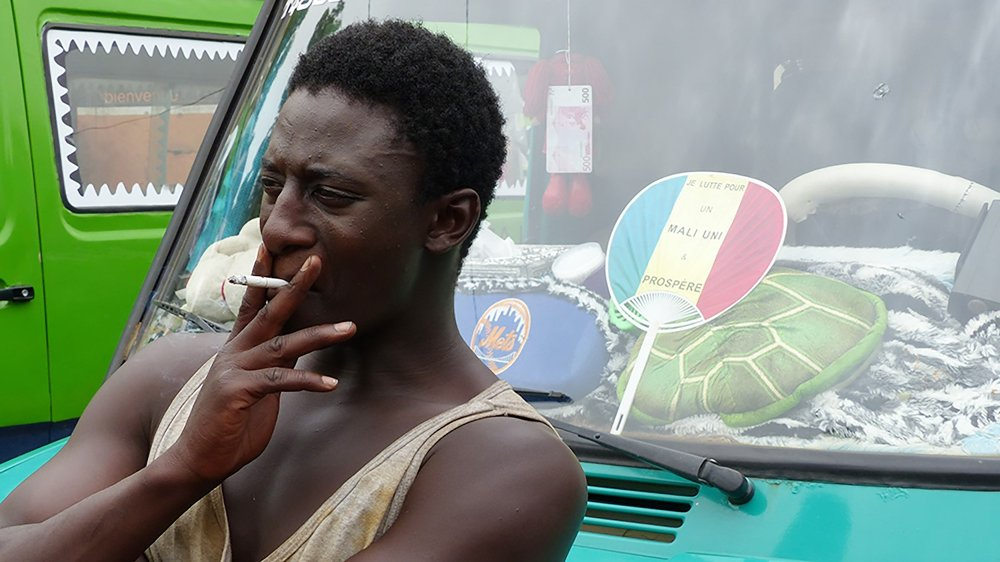Whites on screens often present a distorted reality.
On the major media networks the roles of Whites when it comes to Africa is pretty easily summed up. Experts and helpers. Journalists usually don themselves, à la the inexplicably Pulitzer Prize-crowned Jeffrey Gettleman, in the garb of The Expert of the land where they were parachuted, three days or three years ago. The (mercifully former) NYT Nairobi bureau chief has gone on to write his memoirs (of course), with “Africa” as a backdrop for his massively more important and exciting life. One reader was not terribly impressed… Check this article.
Whites as Helpers (doctors, nurses, relief coordinators) aka Saviours and as Experts; sometimes they are one and the same person. These categories cover pretty much all of the mainstream – especially Anglophone – coverage of ‘Whites on Screens – the Africa Edition’. Oh but there’s now a third category: the Travel Heroes – increasingly Travel Heroines – who traverse the continent piloting sturdy-looking motorcycles or heavy weather vehicles, and always the centre of undiluted African attraction and adoration.
Compare and contrast that with the tapestry of White Lifeforms offered by film directors from the African continent. Just a random fistful. Ready?
A washed-up hippy-like young man with dubious connections in the drugs trade, a small-time crook and womaniser who gets involved in a deal that nearly goes fatally wrong and needs the forceful actions of the locals to save his inconsiderate ass. Classically lovelorn, he kills himself on a motorbike on the Senegalese tourism coast. (Wùlu, by Daouda Coulibaly, Mali)
A ruthless female CEO of an international resources company, who organises violence on a large scale in order to thwart the plans of a patriotic president to keep his country’s resources under his country’s control (African Thunderstorm (L'orage africain: un continent sous influence), by Sylvestre Amoussou, Benin).
A journo and expert (yep, rolled into one), who has his own ideas about the representativity of the community he must depict for the umpteenth aid organisation propaganda gig he is filming – and forces a teenage girl who wants to appear in the video as the Pearl of the Ghetto to get rid of all that finery, put on some cheap jeans and a torn T-shirt and cover her face not with make-up but with dirt (N.G.O. Nothing Going On, by Arnold Aganze, Uganda).
There’s more.
Two utterly hapless “advisers” to a Chinese company that is set to destroy a pristine forest and cause widespread pollution at the behest of a local boy come good who has transformed himself into a ruthless tycoon-cum-politician. All they do is sit, nod and smile, as they get paid for not having the faintest clue about what’s going on (Le Forêt de Niolo, by Adama Roamba, Burkina Faso)
A superficially respectable middle aged gentleman whose company is used as a cover and money tap for drugs transfers (Wùlu, by Daouda Coulibaly, Mali).
A heavily accented European middle-aged businessman who uses a string of cynical one-liners that only help to accentuate the impression that he has absolutely no idea of the mores, the cultures, the politics and the business of the country where he works (African Thunderstorm (L'orage africain: un continent sous influence), by Sylvestre Amoussou, Benin).
A young, idealistic millennial who falls in love with one of the local guys hanging around in a trendy bar who tells her that he is running an NGO. (These are organisations that cling like barnacles to the entire continent). She gets conned into organising support for the enterprising young man who will not use the money for the NGO – but for attending a trendy but expensive culture festival with his mates (N.G.O. Nothing Going On, by Arnold Aganze, Uganda).
No saviours here, nope. No experts. Mostly oafs, bullies, small-time criminals, big-time crooks, losers and adventurers, displaying varying levels of haplessness concerning the continent where they have landed or washed ashore. In sharp contrast to the experts, saviours and heroes (of all genders) that the mainstream media offer, these characters were all multidimensional, multi-layered. In short, they were…interesting!!
White life in Africa is rarely generous, it is very frequenty ill-informed and it is mostly irrelevant
So, dear reader, if you want to get a truly interesting picture of the kind of White Lifeforms that somehow manage to exist on the African continent, I suggest you turn to filmmakers from that continent. White Life in Africa is not terribly glamorous, it is rarely generous, it is very frequently ill-informed and it is mostly irrelevant. They do get things right on occasion, which is nice – but it’s not the rule.
And here’s some more shocking news. There are many many many many Experts, Helpers and Saviours actually existing on the African continent itself! This may astonish you if your media consumption consists of the likes of CNN, BBC, RT, even Al Jazeera or a major daily newspaper. But they exist, in the thousands. You hardly ever hear about them because they are, in most cases, not white. They were born there, they live there and they do their damnedest to make things work. Oh and they have no intention whatsoever to leave. How many, you ask? I’d say pretty much all of them. The Africans you see arriving in Europe on your television screens – if they make it at all – constitute a tiny tiny tiny tiny minority.
The story of this continent is long and old and the Whites you see on your screens are cameos in a tale that began long before they were here and will continue long after they have gone. (And before you ask: yes, that includes me.) It is high time attention concentrated on that epic home-grown African tale and that we collectively stop paying idiotic amounts of attention to the bit players in that tale.
This article was first published on Bram Posthumus' blog.


